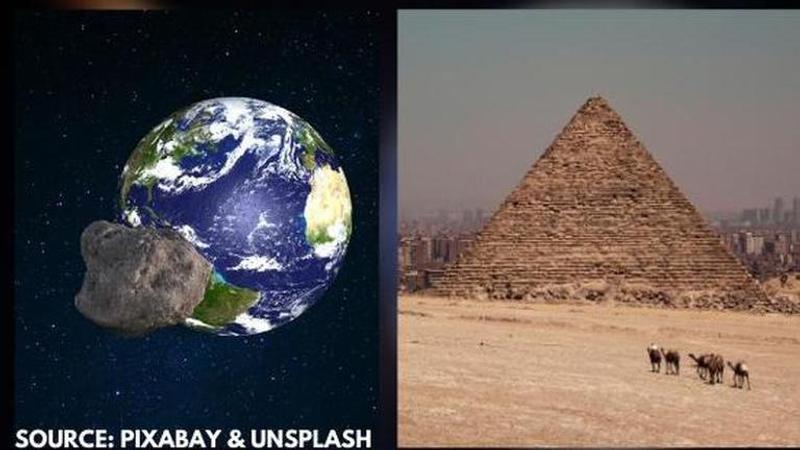Published 15:58 IST, September 5th 2020
Will Asteroid 2010 FR, bigger than Pyramid of Giza, passing by Earth on Sept 6 be visible?
Asteroid 2010 FR double the size of the Giza Pyramids to fly by close to Earth soon. Find out whether the asteroid be visible from Earth's skies.

The National Aeronautics and Space Administration (NASA) is currently tracking the course of Asteroid 2010 FR. This asteroid is believed to be twice as big as the iconic Egyptian monument, the Pyramid of Giza. The ginormous celestial object will be entering Earth’s orbit on September 6. NASA has classified the colossal asteroid as an Apollo asteroid as it is going to come dangerously close to Earth while crossing its orbit. Read on to find out, “Will Asteroid 2010 FR be visible from Earth?”
When will Asteroid 2010 FR enter Earth’s orbit?
The scientists from Center for Near-Earth Object Studies (CNEOS) have revealed to NASA that the asteroid will near Earth’s orbit on September 6 at around 15:30 IST. Asteroid 2010 FR is reportedly up to 270 metres wide and 886 feet tall. Starting from September 6, Asteroid 2010 FR will remain close to the earth for another six days.
How close will Asteroid 2010 FR come to Earth?
According to NASA, at the point of its closest approach, the asteroid will be around 4.6 million miles away from our planet. It may sound a like a huge distance but in astronomical terms, it is not that far away. The space rock is estimated to measure around 120 - 270 metres in diameter.
Which means that at the higher end of that estimate, it suggests the asteroid could be twice as big as the famous Great Pyramid of Giza. However, NASA has also stated that its chances for entering Earth are extremely low. On its website, NASA has stated that over long periods of time, the chances of the Earth being impacted are not negligible but at the moment the NEO scientists are putting their best efforts to first find these objects and then track their motions into the future.
Will Asteroid 2010 FR be visible from Earth?
A NASA report has revealed that so far only one asteroid, named 4 Vesta, which has a relatively reflective surface, has been visible to the naked eye. Its visibility can also be credited to the fact that it is the largest object in our solar system’s asteroid belt. But, in spite of this, even 4 vesta is only visible when is favourably positioned and when the sky is clear. Rarely have any small asteroids passing close to Earth been visible to the naked eye. Hence, there are high chances that Asteroid 2010 FR will not be visible.
Updated 15:58 IST, September 5th 2020




